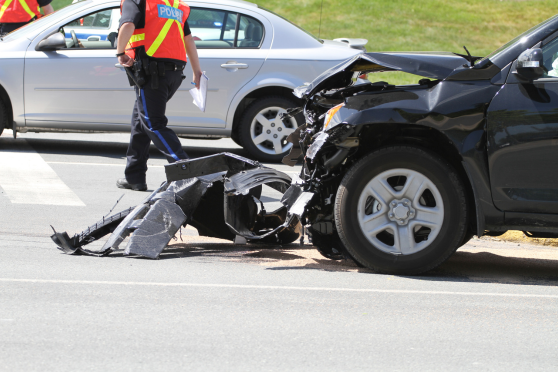Motorcycle accidents devastate families every single day across America. The federal government estimates that per mile traveled in 2022, the number of deaths on motorcycles was nearly 22 times the number in cars. When another driver’s carelessness causes these crashes, proving their negligence becomes critical for securing justice.
Motorcycle accident lawyers must build airtight cases using sophisticated legal strategies, cutting-edge technology, and compelling evidence to prove driver negligence against insurance companies determined to minimize payouts.
Menu list
- Essential Elements Motorcycle Accident Lawyers Must Prove for Negligence Claims
- Advanced Evidence Collection Strategies in Motorcycle Accident Claims
- Specialized Investigation Techniques for Motorcycle Cases
- Overcoming Common Defense Strategies in Negligence Cases
- Hiring a Motorcycle Attorney: Selection Criteria
- Your Path Forward After a Motorcycle Accident
- Common Questions About Proving Driver Negligence
Essential Elements Motorcycle Accident Lawyers Must Prove for Negligence Claims
Building successful negligence in motorcycle accident cases requires attorneys to establish four fundamental legal pillars. Each element must be proven with compelling evidence to secure maximum compensation for injured riders.
Factors like poor road maintenance, tourist-driven traffic surges, and unpredictable weather patterns may all contribute to case complexity. Legal teams must often coordinate with accident reconstruction experts to untangle fault. In some cases, partial liability is shared among multiple drivers, requiring detailed legal strategies. Understanding these nuances is key to presenting a strong, fact-based claim.
Clearwater, Florida, presents unique challenges for motorcyclists navigating busy tourist corridors and unpredictable weather patterns. The city’s mix of year-round residents and seasonal visitors creates varying traffic conditions that can catch drivers off guard. A Clearwater motorcycle accident lawyer often handles cases involving complex roadway conditions and local traffic behaviors, which can shape how negligence is argued.
Duty of Care: Establishing Legal Obligations on the Road
Every driver owes motorcyclists a fundamental duty to operate their vehicle safely. This responsibility extends beyond basic traffic laws to include actively watching for smaller vehicles that might be harder to spot. Commercial drivers face enhanced duties under federal regulations.
Florida’s motorcycle protection statutes specifically address driver responsibilities. These laws require all motorists to maintain safe following distances and check blind spots before changing lanes, creating clear legal standards for proving duty breaches.
Breach of Duty: Identifying Dangerous Driver Behaviors
According to distracted driving statistics provided by the Royal Society for the Prevention of Accidents, it’s a significant issue. The Department for Transport indicated that in 2022, driver distraction contributed to 2,616 road traffic accidents, 76 of which were fatal. Smartphone evidence, aggressive driving documentation, and improper lane change violations form the backbone of breach-of-duty arguments.
Failure to check mirrors, road rage incidents, and texting while driving represent clear violations of reasonable care standards. These behaviors directly contradict the heightened attention drivers should exercise around motorcycles.
Causation: Connecting Driver Actions to Motorcycle Accidents
Direct causation analysis examines whether the driver’s negligent actions directly caused the crash. Chain-of-events reconstruction helps establish clear links between dangerous behaviors and resulting injuries. Multiple causation scenarios require careful analysis to assign proper fault percentages.
Damages: Documenting Motorcycle Accident Losses
Comprehensive damage documentation includes immediate medical expenses, long-term care projections, lost earning capacity, and pain-and-suffering valuations. Motorcycle accident claims demand meticulous record-keeping to support full compensation demands.
While establishing these four pillars of negligence provides the legal framework, today’s most successful motorcycle accident lawyers leverage cutting-edge technology and digital evidence to build unshakeable cases that insurance companies cannot dispute.
Advanced Evidence Collection Strategies in Motorcycle Accident Claims
Modern technology revolutionizes how attorneys gather proof of driver negligence. Digital evidence provides objective documentation that’s difficult for defense teams to challenge or dismiss.
Digital Evidence Revolution: Modern Technology in Negligence Cases
Smartphone telematics reveal precise driving behaviors leading up to crashes. GPS data shows speed violations and erratic driving patterns. Cell phone tower records prove driver distraction at critical moments. Vehicle black box data extraction provides scientific evidence of impact forces and pre-crash dynamics.
These technological tools create comprehensive timelines that support negligence arguments with hard data rather than witness testimony alone.
Surveillance and Camera Evidence Mastery
Traffic camera footage acquisition requires swift action before automatic deletion systems erase crucial evidence. Private security camera canvassing extends the evidence collection radius beyond immediate crash scenes. Dashcam evidence from multiple vehicles provides different perspectives on the same incident.
Body camera footage from first responders often captures immediate post-crash statements and scene conditions that prove invaluable during trial preparation.
Beyond digital evidence lies a sophisticated world of specialized investigation methods that can reconstruct every second of your accident with scientific precision, providing the compelling proof needed to secure maximum compensation.
Specialized Investigation Techniques for Motorcycle Cases
Professional accident reconstruction combines science with legal strategy. These advanced methods create compelling visual presentations that help juries understand complex crash dynamics.
Accident Reconstruction Technology
3D crash simulation software recreates accidents with scientific precision. Drone photography captures comprehensive scene documentation from multiple angles. Laser scanning technology preserves exact measurements and positions. Vehicle damage analysis algorithms calculate impact forces and collision vectors.
Medical Expert Testimony Coordination
Biomechanical injury analysis explains how crash forces caused specific injuries. Helmet effectiveness studies support or refute comparative negligence claims. Road rash documentation provides compelling visual evidence of impact severity. Long-term disability projections justify substantial compensation demands.
Armed with this powerful evidence arsenal, motorcycle accident lawyers must now navigate the predictable—yet challenging—defense tactics that insurance companies deploy to minimize payouts and shift blame to injured riders.
Overcoming Common Defense Strategies in Negligence Cases
Insurance companies deploy predictable tactics to reduce payouts. Successful attorneys anticipate these strategies and prepare counterarguments that protect their clients’ interests.
Combating Motorcycle Bias and Stereotypes
Jury selection strategies identify and eliminate biased panel members. Character evidence presentation shows responsible riding habits and proper licensing. Safety gear compliance documentation counters reckless rider stereotypes. Training and licensing history demonstrate competent motorcycle operation skills.
Addressing Comparative Negligence Claims
Speed analysis proves motorcycles weren’t exceeding safe limits. Lane positioning justification explains proper road positioning. Defensive driving evidence shows reasonable accident avoidance attempts. Split-second decision documentation highlights the impossible choices riders face when avoiding negligent drivers.
Successfully countering these defense strategies opens the door to the real battle: facing insurance companies’ sophisticated tactics designed to pressure victims into accepting inadequate settlements before the true value of their case is realized.
Hiring a Motorcycle Attorney: Selection Criteria
Choosing the right legal representation determines case outcomes. Not all personal injury lawyers possess the specialized knowledge needed for complex motorcycle negligence cases.
Experience and Specialization Requirements
Motorcycle attorney candidates should demonstrate extensive case histories involving two-wheeled vehicle accidents. Trial experience and documented success rates indicate courtroom competence. Insurance negotiation expertise ensures maximum settlement values. Local court familiarity provides strategic advantages during litigation.
Resource and Technology Capabilities
Expert witness network access provides crucial testimony support. In-house investigation teams gather evidence efficiently. Advanced technology utilization creates compelling case presentations. Adequate financial resources fund comprehensive case development without compromising quality.
Given these complex legal timelines and high-stakes decisions, selecting the right motorcycle accident lawyer becomes crucial to executing these sophisticated strategies and maximizing your recovery.
Your Path Forward After a Motorcycle Accident
Proving driver negligence requires sophisticated legal strategies, advanced technology, and specialized expertise that general practitioners often lack. From digital evidence collection to expert witness coordination, motorcycle accident cases demand attorneys who understand the unique challenges riders face. Don’t let insurance companies exploit your vulnerability, experienced legal representation ensures negligent drivers face full accountability for their reckless actions.
Common Questions About Proving Driver Negligence
What not to say to an injury lawyer?
Don’t exaggerate or downplay your injuries. Be honest about your injuries when discussing them with healthcare providers, attorneys, and insurance adjusters. Exaggerating symptoms can harm your credibility, while downplaying them reduces compensation.
Can an accident be considered negligence?
Negligence in motorcycle accidents means drivers didn’t take the necessary steps to prevent harm. Every driver must follow traffic laws and drive safely. Breaking that duty leading to crashes constitutes negligence.
How long do I have to file motorcycle accident claims?
Florida’s statute of limitations typically allows four years for motorcycle accident claims. However, government entity claims require shorter notice periods. Consulting attorneys immediately preserves all legal options and prevents missed deadlines.





